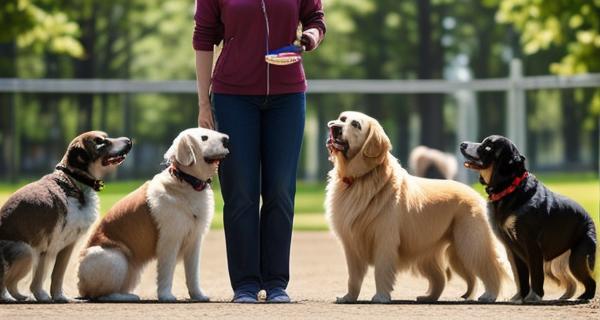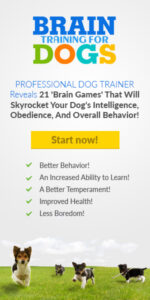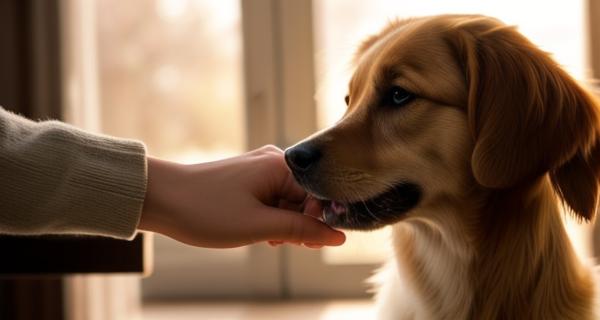Dog Park Etiquette: Training Your Dog for Positive Playtime
Dog Park Etiquette
## Dog Park Etiquette
Dog parks are fantastic for socialization and exercise, but a little understanding of etiquette goes a long way in ensuring a safe and enjoyable experience for everyone. Before you unleash your furry friend, consider whether they’re truly ready for a group play session. A dog with excessive prey drive or aggression might be better suited for individual walks.
**Reading the Room:** Observe the other dogs and owners before entering. Are they relaxed and attentive? Are the dogs greeting calmly or displaying signs of stress (stiff body language, whale eye, tucked tail)? If the atmosphere feels tense, it might be best to wait for a calmer moment.
**Leash Manners Matter:** Even at the dog park, keep your dog on a leash until they’re reliably demonstrating good recall. This gives you control and prevents unwanted interactions.
**Introduction is Key:** Don’t just throw your dog into the fray! Approach a calm, friendly dog and ask the owner for permission to introduce them. Allow a brief, controlled sniff before letting them interact freely.
**Supervise and Intervene:** Constant vigilance is crucial. Watch for signs of bullying, resource guarding (protecting toys or food), or overly boisterous play. Be prepared to calmly separate dogs if necessary.
**Respect Boundaries:** Not every dog wants to play. If a dog is ignoring your dog or showing signs of discomfort, respect their space and don’t pressure them to interact.
**Clean Up After Your Pup:** Always bring poop bags and be a responsible dog owner. It’s a simple way to show respect for the park and other visitors.
By following these simple guidelines, you can help create a positive and safe environment for your dog and all the dogs at the park. Happy playing!
Positive Playtime
## Dog Park Etiquette: Training Your Dog for Positive Playtime
Dog parks can be fantastic for socialization and exercise, but success hinges on good etiquette – for both you and your furry friend! Before diving into the dog park, invest in some training. Basic commands like “sit,” “stay,” “leave it,” and a reliable recall are *essential*. A dog who respects these commands is a safer and more enjoyable playmate.
Observe your dog’s body language. Watch for signs of stress: tucked tail, whale eye (showing the whites of the eyes), lip licking, yawning, or a stiff posture. If your dog seems overwhelmed, remove them from the situation.
Introduce your dog gradually. Don’t just unleash them into a chaotic pack! Start with a controlled introduction on leash, allowing them to sniff and assess. Supervise closely during playtime. Be proactive in redirecting unwanted behaviors like excessive mounting or bullying.
It’s your responsibility to ensure your dog isn’t disrupting the park’s harmony. If your dog is repeatedly bullying other dogs, it’s time to leave.
Remember, positive playtime is about fun for *everyone*. Bring high-value rewards – those super tasty treats – to reinforce good behavior and create positive associations with the dog park. A well-trained dog, combined with attentive supervision, will help ensure your dog park visits are safe, fun, and create lasting positive experiences.
Dog Training
## Dog Park Etiquette: Training Your Dog for Positive Playtime
Dog parks can be a fantastic place for your furry friend to socialize and burn off energy, but they can also be minefields of potential conflict if your dog isn’t properly prepared. Positive play isn’t just about letting dogs run wild; it requires training and mindful management from you.
Before even stepping foot in the dog park, solid recall is non-negotiable. Your dog *must* reliably come when called, even with distractions. Practice this in various environments beforehand. Also, work on polite greetings. Teach your dog to sit or stay calmly while other dogs approach. A solid “leave it” command is crucial for preventing resource guarding – protect your dog’s toys or food.
During playtime, be observant. Watch your dog’s body language and the body language of other dogs. Signs of stress include tucked tails, flattened ears, whale eye (showing the whites of the eyes), and excessive lip licking. If you see these, remove your dog from the situation.
Don’t be afraid to intervene! Redirect play if it becomes too rough. A simple “break” command can help de-escalate tense moments. If your dog is consistently reactive or aggressive, a dog park might not be the right environment. Consider alternative socialization options like controlled playdates or training classes.
Remember, dog park etiquette is a two-way street. Be respectful of other owners and their dogs, and prioritize your dog’s safety and well-being. A well-trained dog is a happy dog, and a happy dog makes for a more enjoyable dog park experience for everyone.
Playtime Rules
## Dog Park Etiquette: Training Your Dog for Positive Playtime
**Playtime Rules**
Dog parks can be fantastic for socialization and exercise, but a little preparation goes a long way in ensuring a safe and enjoyable experience for everyone. Before you unleash your furry friend, consider some key etiquette points and training exercises.
Start with basic obedience. A solid recall, sit, stay, and leave-it are non-negotiable. These commands are crucial for regaining control if a play session gets overwhelming. Practice these commands regularly, especially in distracting environments.
Observe your dog’s body language. Learn to recognize signs of stress: tucked tail, whale eye (showing the whites of the eyes), lip licking, yawning, or a stiff posture. If your dog shows these signals, remove them from the situation immediately.
Introduce your dog to the park gradually. Start with short visits during off-peak hours to minimize overwhelming interactions. Supervise closely, especially during initial encounters.
Respect other dogs and owners. Don’t force interactions. Ask before your dog joins another dog’s playgroup. If your dog is initiating play, allow the other dog to approach.
Be aware of resource guarding. This is when your dog becomes possessive of toys or food. Avoid bringing valuable items to the park. If resource guarding occurs, calmly remove the item and separate the dogs.
Remember, dog park etiquette is a shared responsibility. By prioritizing training, observation, and respect, you can help create a positive and safe environment for all dogs and their owners. A well-behaved dog is a happy dog – and a welcome addition to the dog park community!





Post Comment
You must be logged in to post a comment.